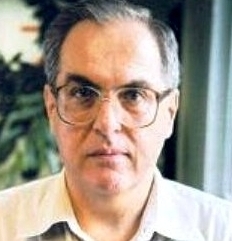Imre Pap
He was introduced to computer science (Boolean algebra, computer structure and operation) when he was in fourth grade, in the Cybernetics class at Eötvös Gymnasium. (His practical classes were on the M3 computer of the Hungarian Academy of Sciences Computer Science Center.)
Due to his love for the subject, he continued his studies at the Faculty of Electrical Engineering (VIK) of the Budapest University of Technology (BME), where he also participated in the work of the scientific student groups. On the hardware side, he was involved in the design and construction of educational machines and digital devices suitable for conducting psychological tests, while on the software side, he prepared programs for the scientific work of the Instrumentation Department in machine code for the URAL-2 machine of the Budapest University of Economics (BKE) and in ALGOL for the ICL computer of the Central Physical Research Institute (KFKI). His diploma project was the design of a device necessary for evaluating the so-called capnogram, which shows the carbon dioxide content of exhaled air; he performed the simulation of its operation on the department's ODRA-l0l3 type computer.
Between 1968 and 1972, his research topic at the Medicor Research Institute was the applicability of computers in medicine and medical technology.
Between 1972 and 2012, he participated in the IT work of the Central Statistical Office (KSH) in various functions (system organizer, programmer and application developer, department manager, IT coordinator, relational database designer, Oracle database administrator, project manager, trainer). He is credited with creating the first automatic error correction program in the field of demography in 1973.
In 1980, he was responsible for the IT management of the first decentralized census conducted with the involvement of the national computer park of the Computer and Administration Company (SZÜV); in 1993, the official introduction of the Oracle database management system, the development of the storage structure and operating procedures; in 1999, he was responsible for managing the development of a database-based, flexible, user-friendly, client-server (for internal users) and Web (for external users) query system.
Under his leadership, the multidimensional statistical data warehouse for information purposes, in line with the technology of the 2000s, was designed and developed at the Central Statistical Office, as well as the application operated by statisticians, with which end users could design new data sets and load data themselves.
In April 1994, he contacted the European Oracle User Community (EOUG), and then in July of the same year, the NJSZT. After recruiting members, in 1994, he established the Hungarian Oracle Users Circle (HOUG) with 50 founding members, which operates within the framework of the NJSZT, and which officially became a member of the EOUG in 1995. Later, he continued to participate in the work of the HOUG presidency as a member of the presidency and then an honorary member of the presidency.
Created: 2018.02.14. 18:05
Last modified: 2024.04.19. 18:24

